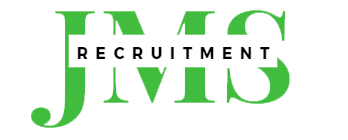- Home
- Applying for a Job
Applying for a Job
Applying for a Job
Cv Tips & Structure
Making sure your CV is tailored to the role you want for is an absolute necessity when applying for jobs, but there are general steps you can take when building the structure of your CV to make sure it always looks good and reads well.
Do you know how to structure the Cv?
Not knowing how to structure their CV is one of the most common problems jobseekers face, so we’ve laid out a simple structure to help you.
CVs should be tailored to each role you apply for, but to save time first create a general CV which can be easily adapted for each employer, based on the job description.


Contact Details
Make sure to use the phone number and email address that you use most often. You don’t want to miss an opportunity by failing to respond to their invitation to an interview in a timely fashion.
Personal Summary
Ensure the first area at the top of your CV is a summary of your experience and includes specific applicable experience in relation to the job ad as opposed to generalities.
Skills
Include a skills section to capture the reader’s attention by making it clear what you can offer. Use a brief bulleted list of the skills and key strengths that you possess that are relevant to the role, such as software packages you have worked with.
Experience
This section should include your work history and any relevant volunteer or work experience placements. Talk about business or project successes and showcase your skills and experience.


Your other considerations should be
- Work backwards from your most recent job and don’t leave any gaps (if you travelled, say so)
- If you are a graduate without much experience, highlight the relevant skills that you gained in your course
- List your highest qualifications by institution, course name and grade achieved
- Make sure to include any training courses or professional/industry standard qualifications
- Include any memberships to chartered institutes or relevant organisations.
References
Actual references are rarely included on CVs. It is usually fine to simply say ‘References are available on request’.
How to write a cover letter
What is a cover letter
Your cover letter is an introduction to your CV and a chance to capture the attention of your reader. It should aim to demonstrate the qualities that set you apart from other applicants.
Each job application should be tailored when you’re applying to show you are the right person for this job. Underline the keywords used to describe the skills, training and experience required in the job description. Search through your own career history for specific examples of how you can demonstrate you have what the employer is looking for.
Your cover letter should complement your CV by highlighting the most relevant aspects relating to the position. We suggest making a draft, then when you are satisfied that it reads well ask a friend to review it.
- Address it to a person; never just ‘Dear Sir or Madam’
- Always quote the job title, the reference number and your name
- You’ve tailored it to every specific application
- It’s on one page
- It’s addressed to a specific individual
- It creates an action plan for specific future contact
- Give it to a friend or someone in your network to review

How to identify your key strengths
If you’re having trouble pinning down your skills and thinking of applicable situations, you can try performing a personal SWOT analysis on yourself.
SWOT stands for
- Strengths
- Weaknesses
- Opportunities, and
- Threats
Using this model you can look at how your aptitudes create new opportunities and overcome challenges. It’s a great way to find out how you can use skills you have to overcome any shortcomings.
Strenghth
Think about positives which are your key selling points
Talk about your personal characteristics; for example good analytical skills, determination, experience with specific software or products and problem solving.
Weakness


Negative areas you need to improve on
Be realistic and show that you realise and are aware of your weaknesses along with what you are doing to turn the weakness into a strength.
Opportunities
Positive external conditions to take advantage of
Start off with opportunities you see in the job you are interviewing for. This will show your interest and positive attitude.
Threats
Negative external conditions you can’t control but can minimise
There are always threats you will face at your workplace; for example; overworking yourself by taking on so many responsibilities or your job responsibilities changing.
Working with a Recruiter
Benefits of using expert recruiter
We know your industry
JMS recruiters will understand the special terminology of your industry, how your particular job works and where your skills are most suited for your next career move.
We can improve your CV
Our expert consultants view hundreds, sometimes thousands of applications in a week, so they will instantly be able to identify if your CV will stand out from other candidates. They will be able to help you improve your structure so that you successfully match the role you are applying for.


Enhance your online branding
We understand the importance of social media in your job search and can advise you on your personal brand and online profile so that you can make a good impression on a prospective employer.
We act as your agent
One of the most valuable aspects of working with a recruiter is that they can represent you with the companies you are interested in working with.
It’s difficult to get across your professional appearance and personality in a CV. That’s where a recruitment consultant comes in:
- Our relationship with the hiring company will make a stronger case for you and get the feedback you might not be able to receive when applying independently.
- We have the skills and experience to be able to sell you above the other candidates and upon offer, negotiate the best package on your behalf.
We prepare you for interviews
We aim for a “win win” situation between candidate and company. Our consultants prepare candidates for interviews on a regular basis and we provide an impressive shortlist of candidates who meet the criteria the vacancy requires.
Consider that:
- We already know the hiring company and the hiring manager, so we’ll be able to brief you well.
- We’ll coach you on what to say and give you feedback on your interview technique.
- We provide you with advice on how to remedy any gaps in your industry knowledge.
- Also, you should want to meet the person who is representing you to your potential future employer!


We provide multiple opportunities
It is most likely that you will be meeting your recruitment consultant about a specific role. However, there are occasions when we have other jobs on our database that match your skillset. So we will make sure you aware of those jobs and allow you to decide if you should apply for them.
How to Build your Personal Brand Online
Does your social network reflect your professional skills?
It’s vital to ensure your social networks reflect the best of both your personal and professional brands. To that end, we’ve compiled this guide to using social media (LinkedIn in particular) to help improve your standing in the job market.
Important Considerations
- Any social media profiles you have should be considered a part of your personal or professional brand.
- Be aware that potential employers are likely to look at these to get a reflection of you.
- Always be careful about what you post or share, and make sure you’re always presenting your best side.
- Your professional brand is how employers and peers see you, and is no longer solely about your CV.


LinkedIn Profile
Just having a LinkedIn profile isn’t enough, you need to be engaged with your sector or industry area. Luckily, LinkedIn makes it very easy to connect with other professionals and find industry-related groups and content. Here are a few ways to make yourself more visible to potential employers and to find out more about the latest developments in your area.
LinkedIn provides the opportunity to showcase your skills and interests. Make sure you post and share articles that are of interest to you and relevant to your industry.
One of the most important aspects of LinkedIn is the ability to connect with people. Be careful of overextending however as the quality of your connections on LinkedIn is more important than the quantity, so only link with people you feel are relevant to you.
Groups provide the opportunity for you to learn more about your industry by asking questions and networking with others. Most are tailored to interests and industries, so search for the ones most relevant to your industry and location.
LinkedIn is built to help people find jobs. By finding the organisation and looking for people working for the company with a similar job title to yours, you can review their profile along with their key responsibilities. This gives you an idea of what you should be aspiring to, should you wish to work for this company in the future.
List your skills and let other professionals you network with endorse them. This gives each of your skills a rating based on feedback from other users, it’s a great way to demonstrate to potential employers not only your library of skills, but the benefits they have added to the organisations you’ve worked for.








